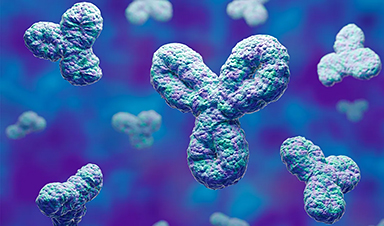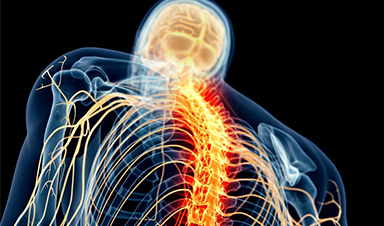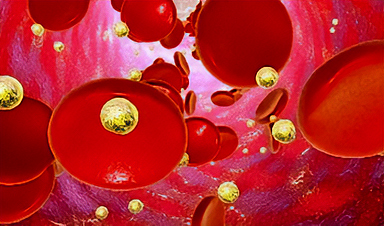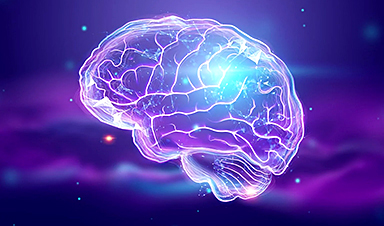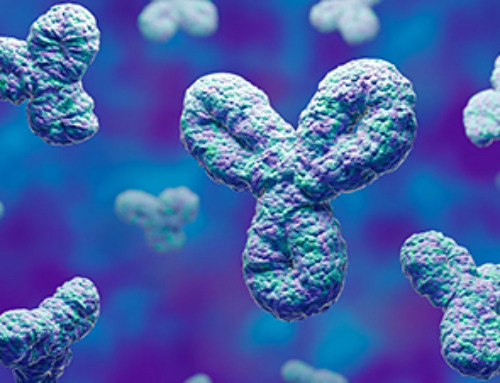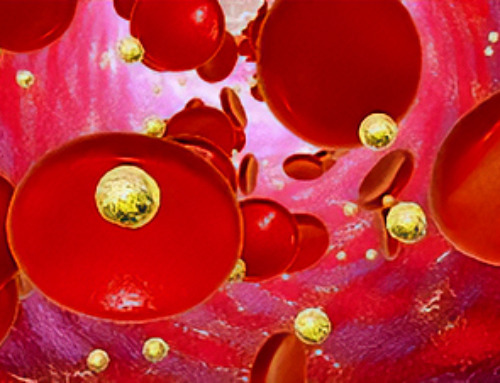As our body ages, not only joints, bones and muscles wear out, but also our nervous system. Nerve cells die, are no longer fully replaced, and the brain shrinks. “Aging is the most important risk factor for Alzheimer’s disease and many other devastating brain diseases,” says Richard Hodes of the National Institutes of Health (NIH). But what exactly happens in our minds as we age, and which parts of the brain age the fastest?
A look into the brains of young and old mice
A team led by Kelly Jin from the Allen Institute for Brain Science in Seattle has now investigated this in more detail. To do this, the neuroscientists compared what happens in the brains of two-month-old “young” and 18-month-old “old” mice. The “old” mice correspond roughly to the brain age of people in older middle age.
The researchers sequenced the RNA of a total of 1.2 million brain cells from 16 brain regions and thus mapped which genes are active in which brain region and which cell types. The tests covered about 35 percent of the entire mouse brain.
Some cells age faster
This showed that some brain cells are more sensitive and age faster than others. In the older mice, these cells showed a significantly different pattern of gene activity than in the young animals, and the contrast was stronger than in other brain cells. In total, around 2,500 genes were more or less active than at a young age, but not equally in all cells.
Most of these sensitive cell types were glial cells, known as the supporting cells of the brain. They do not transmit signals themselves, but support the neurons in transmitting signals through neurotransmitters and support structures. The cells that changed particularly strongly with age included microglia and border-associated macrophages, oligodendrocytes, tanycytes and ependymal cells, as Jin and her colleagues found.
Does altered gene activity promote inflammation and dementia?
It was striking that in these cells in the aging brain, those genes that are associated with inflammation and the immune system as well as the blood vessel cells of the brain were more active. The age-related changes could therefore promote inflammation.
On the other hand, genes related to neuronal structure and function were less active than in young brain cells. This suggests that these cells no longer adequately protect and support neurons, making it easier for neurodegenerative diseases such as dementia to occur.
“Our hypothesis is that these cell types become less efficient at integrating signals,” says Jin. “And this loss of efficiency somehow contributes to what we know as aging in the rest of our bodies.”
Aging hotspot in the hypothalamus
At a certain point in the brain, adjacent to the third ventricle of the hypothalamus, these two effects even occurred together. The third ventricle is an important pipeline through which the cerebrospinal fluid flows, exchanging hormones and nutrients between the hypothalamus and the body. According to the study, there is an aging hotspot in the aging brain where the nerve cells wear out particularly quickly.
At this turntable, the researchers also found cell types with strongly altered gene activity – including tanycytes, ependymal cells and neurons – that are important for nutrient and energy metabolism. Jin and her colleagues conclude that brain aging may also be related to diet and other lifestyle factors such as sleep. Previous studies also suggest that a balanced diet, intermittent fasting or calorie restriction can slow down the aging process of the brain.
Hope for new therapies against aging
“These results provide a very detailed map of which brain cells may be most affected by aging,” Hodes says. “This new map could fundamentally change the way scientists think about how aging affects the brain, and also provides guidance for developing new treatments for age-related brain diseases.”
In particular, the aging hotspot in the hypothalamus is now to be researched in more detail in follow-up studies. Together with the knowledge of which cell types need to be specifically treated, this could lead to the development of new drugs and nutritional strategies that delay the aging process, maintain the function of nerve cells and prevent Alzheimer’s and Co. The knowledge could therefore help to maintain brain health into old age. (Nature, 2025; doi: 10.1038/s41586-024-08350-8)
Sources: Allen Institutes, NIH
News
Specially engineered antibody delivers RNA therapy to treatment-resistant tumors
Elias Quijano, PhD; Diana Martinez-Saucedo, PhD; Zaira Ianniello, PhD; and Natasha Pinto-Medici, PhD, there are 25 other contributors, most from Yale's Department of Therapeutic Radiology and from the departments of genetics, molecular biophysics and [...]
Vaccinated women face fewer cervical cancer risks
New data from Denmark shows the HPV vaccine’s powerful long-term impact, while also revealing why cervical cancer screening is still essential. A Danish study published in the journal Eurosurveillance reports that women who received the human [...]
3D-printed implant offers a potential new route to repair spinal cord injuries
A research team at RCSI University of Medicine and Health Sciences has developed a 3-D printed implant to deliver electrical stimulation to injured areas of the spinal cord, offering a potential new route to [...]
Nanocrystals Carrying Radioisotopes Offer New Hope for Cancer Treatment
The Science Scientists have developed tiny nanocrystal particles made up of isotopes of the elements lanthanum, vanadium, and oxygen for use in treating cancer. These crystals are smaller than many microbes and can carry isotopes of [...]
New Once-a-Week Shot Promises Life-Changing Relief for Parkinson’s Patients
A once-a-week shot from Australian scientists could spare people with Parkinson’s the grind of taking pills several times a day. The tiny, biodegradable gel sits under the skin and releases steady doses of two [...]
Weekly injectable drug offers hope for Parkinson’s patients
A new weekly injectable drug could transform the lives of more than eight million people living with Parkinson's disease, potentially replacing the need for multiple daily tablets. Scientists from the University of South Australia [...]
Most Plastic in the Ocean Is Invisible—And Deadly
Nanoplastics—particles smaller than a human hair—can pass through cell walls and enter the food web. New research suggest 27 million metric tons of nanoplastics are spread across just the top layer of the North [...]
Repurposed drugs could calm the immune system’s response to nanomedicine
An international study led by researchers at the University of Colorado Anschutz Medical Campus has identified a promising strategy to enhance the safety of nanomedicines, advanced therapies often used in cancer and vaccine treatments, [...]
Nano-Enhanced Hydrogel Strategies for Cartilage Repair
A recent article in Engineering describes the development of a protein-based nanocomposite hydrogel designed to deliver two therapeutic agents—dexamethasone (Dex) and kartogenin (KGN)—to support cartilage repair. The hydrogel is engineered to modulate immune responses and promote [...]
New Cancer Drug Blocks Tumors Without Debilitating Side Effects
A new drug targets RAS-PI3Kα pathways without harmful side effects. It was developed using high-performance computing and AI. A new cancer drug candidate, developed through a collaboration between Lawrence Livermore National Laboratory (LLNL), BridgeBio Oncology [...]
Scientists Are Pretty Close to Replicating the First Thing That Ever Lived
For 400 million years, a leading hypothesis claims, Earth was an “RNA World,” meaning that life must’ve first replicated from RNA before the arrival of proteins and DNA. Unfortunately, scientists have failed to find [...]
Why ‘Peniaphobia’ Is Exploding Among Young People (And Why We Should Be Concerned)
An insidious illness is taking hold among a growing proportion of young people. Little known to the general public, peniaphobia—the fear of becoming poor—is gaining ground among teens and young adults. Discover the causes [...]
Team finds flawed data in recent study relevant to coronavirus antiviral development
The COVID pandemic illustrated how urgently we need antiviral medications capable of treating coronavirus infections. To aid this effort, researchers quickly homed in on part of SARS-CoV-2's molecular structure known as the NiRAN domain—an [...]
Drug-Coated Neural Implants Reduce Immune Rejection
Summary: A new study shows that coating neural prosthetic implants with the anti-inflammatory drug dexamethasone helps reduce the body’s immune response and scar tissue formation. This strategy enhances the long-term performance and stability of electrodes [...]
Scientists discover cancer-fighting bacteria that ‘soak up’ forever chemicals in the body
A family of healthy bacteria may help 'soak up' toxic forever chemicals in the body, warding off their cancerous effects. Forever chemicals, also known as PFAS (per- and polyfluoroalkyl substances), are toxic chemicals that [...]
Johns Hopkins Researchers Uncover a New Way To Kill Cancer Cells
A new study reveals that blocking ribosomal RNA production rewires cancer cell behavior and could help treat genetically unstable tumors. Researchers at the Johns Hopkins Kimmel Cancer Center and the Department of Radiation Oncology and Molecular [...]

